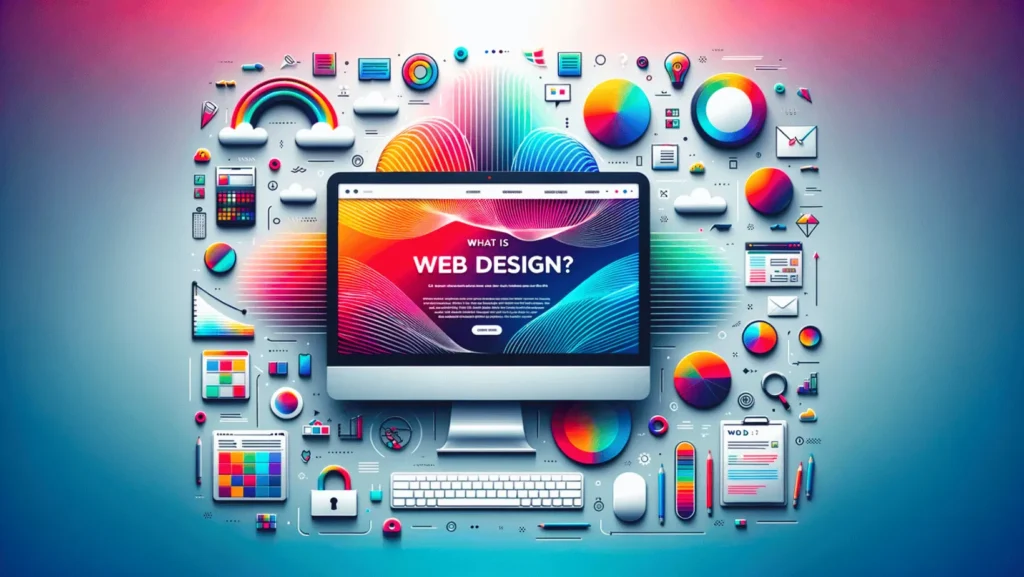In today’s digital age, a well-designed website is more than just a virtual storefront—it’s a crucial component of a brand’s identity, a powerful marketing tool, and a gateway to engaging with audiences worldwide. Web design encompasses a diverse array of disciplines, from aesthetics and usability to functionality and performance. In this blog post, we’ll delve into the essentials of web design and explore how to create compelling online experiences that captivate, inform, and delight visitors.
Understanding Web Design:
Web design is the process of creating and styling the visual and interactive elements of a website, with the goal of delivering a seamless and engaging user experience. It involves a combination of graphic design, user interface (UI) design, user experience (UX) design, and front-end development to bring a website to life.
Key Elements of Effective Web Design:
- User-Centric Design: Place the needs and preferences of your target audience at the forefront of your design process. Conduct user research to gain insights into their behaviors, preferences, and pain points, and use that knowledge to inform your design decisions.
- Responsive Design: Ensure your website is responsive and adapts seamlessly to various devices and screen sizes, including desktops, laptops, tablets, and smartphones. Responsive design enhances usability, accessibility, and user satisfaction across all devices.
- Intuitive Navigation: Design clear and intuitive navigation menus that make it easy for users to find what they’re looking for. Use logical grouping, hierarchy, and labeling to guide users through your website’s content and functionality effortlessly.
- Visual Hierarchy: Establish a visual hierarchy that directs users’ attention to the most important elements of your website, such as headlines, calls-to-action, and key messages. Use techniques like color, contrast, size, and spacing to emphasize and prioritize content effectively.
- Consistent Branding: Maintain consistency in branding elements, including colors, fonts, imagery, and tone of voice, to reinforce your brand identity and create a cohesive user experience. Consistent branding builds trust and recognition among visitors.
- Engaging Visuals: Incorporate high-quality visuals, such as images, illustrations, videos, and graphics, to enhance visual appeal and storytelling. Use visuals strategically to convey key messages, evoke emotions, and create memorable experiences for users.
- Optimized Performance: Optimize your website’s performance by minimizing loading times, reducing file sizes, and optimizing code. Fast-loading websites improve user experience, reduce bounce rates, and positively impact search engine rankings.
- Accessible Design: Ensure your website is accessible to users with disabilities by following accessibility best practices, such as providing alternative text for images, using semantic HTML markup, and implementing keyboard navigation options.
- SEO-Friendly Structure: Structure your website with search engine optimization (SEO) in mind, using descriptive page titles, meta tags, and headings to improve visibility and ranking in search engine results pages (SERPs). SEO-friendly design enhances discoverability and organic traffic.
- User Feedback and Iteration: Solicit feedback from users through surveys, usability testing, and analytics tools to identify areas for improvement and iterate on your design continuously. User feedback is invaluable for refining your website’s design and functionality over time.
The Impact of Web Design:
A well-designed website can have a profound impact on a brand’s success, influencing brand perception, customer engagement, and conversion rates. A visually appealing, user-friendly website builds credibility, instills trust, and encourages visitors to explore further, ultimately driving business growth and fostering long-term relationships with customers.
In conclusion, web design is a dynamic and multifaceted discipline that requires careful consideration of aesthetics, usability, functionality, and performance. By focusing on user-centric design principles, embracing responsive design techniques, and optimizing for accessibility and SEO, businesses can create compelling web experiences that leave a lasting impression on visitors and achieve their goals effectively.
